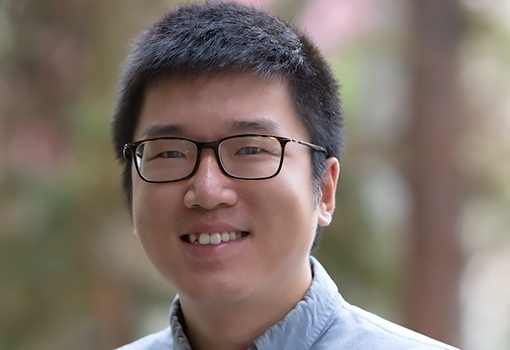In order to solve some of the world’s top energy needs, Bolin Liao is working at the front line of efforts to better understand the behaviors and interactions of the most fundamental energy carriers in materials, such as electrons, phonons, and photons.
“By looking at particles on the atomic level in the smallest time and length scales, we can determine how particles collide, interact, and transport heat and electrical current,” said Liao, an assistant professor of mechanical engineering at UC Santa Barbara. “Understanding the smallest details of energy transport and conversion processes will lead to more efficient and cost-effective energy technologies.”
Liao’s experimental and computational approach to creating more efficient energy devices continues to receive significant support and recognition. This month, the National Science Foundation (NSF) bestowed upon him its most prestigious honor for junior faculty, the NSF’s Early Career Development Award. The recognition includes a five-year, $500,000 federal grant for research and educational activities.
“I am very fortunate to receive this honor,” said Liao, who supervises the Transport for Energy Applications Laboratory (TEALab) at UCSB. “The funding will allow me to focus on my work and spend more time running experiments to tackle fundamental issues.”
Liao plans to use the NSF grant to study phonon-electron scattering which occurs when the two elementary particles collide, and how this process can be controlled to tune the thermal transport properties of materials. While electrons are responsible for a material’s electrical properties, phonons determine the thermal properties and how fast heat can be transferred across the material. In particular, Liao's lab will explore mechanisms to introduce electrons into a material by applying an electric field or shining light to collide with phonons and modify how a material conducts heat.
“Understanding at the microscopic level will help us design thermal switches that turn on and off in response to temperature change,” said Liao. “The switches do not require a power source and could significantly improve thermal activity and efficiency in, for example, buildings and car engines.”
Since last September, Liao has received three early career awards worth a combined $1,610,000 in research funding. Two months ago, the U.S. Army Research Office Young Investigator Program awarded him a total of $360,000 in research funding over a three-year period. The program recognizes outstanding young faculty whose research is relevant to the Army, which in Liao’s case, focuses on understanding the cooling process of electrons in two-dimensional materials. Because the energy carriers lose heat quickly, Liao will use a scanning ultrafast electron microscope (SUEM) to observe them. The microscope creates time-lapse images so scientists can visualize how electrons in a material cool, interact, and move around.
“With further insight into the cooling process, we can design more efficient solar cells by harvesting electrons before they cool down,” added Liao, referring to devices that convert the energy of light directly into electricity. “The result will be more efficient photo-detectors and solar cells, which the Army sees as beneficial.”
Last September, he received an early-career research award from the U.S. Department of Energy (DOE), which included $750,000 in research funding to be spread over five years. The DOE project investigates the coherence of energy carriers in their transport process.
“I am thrilled to see Professor Bolin Liao receive three early-career research awards. He is another example of the high-quality young faculty we have in the College of Engineering, ” said Rod Alferness, dean of the College of Engineering. “These awards are a testament to his exciting and innovative research into energy at the quantum scale in an effort to create more efficient and effective energy technology.”
Liao sees the culture of collaboration in the College of Engineering and throughout UCSB as being key to his recognitions. “My projects have collaborators from across campus, including materials science, chemical engineering, physics, and more,” he said. “Collaboration at UCSB truly opens new horizons for researchers like myself.”

Mechanical engineering assistant professor Bolin Liao has received three early-career awards, including the NSF CAREER Award, since September 2018.

